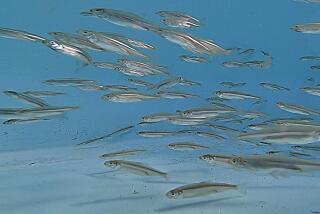On the waterfront
- Share via
THE SALTON SEA is an accident of man and an insult to nature, an artificial lake so rank that its rotten-eggs odor often overwhelms its sparkle, an unnatural blunder with too much salt and too many dead fish. It must be saved.
If only it were that easy. The lake, created in 1905 when a badly built canal diverted Colorado River water to a depression in the desert straddling Riverside and Imperial counties, is drying up and in danger of extinction. Yet if the Salton Sea were to dry up entirely, the ensuing dust storms would pollute the Coachella Valley air with toxins now underwater. The sea also is a habitat for an endangered species of fish and a vital stopping ground for 400 species of birds.
California soon must decide what to do about the accidental lake. In 10 years, it will lose half its inflow when more Colorado River water is shifted from agricultural to urban areas. The state is required to come up with options to save the Salton Sea, and it offers 10 possible solutions in a recent report, ranging from very expensive to ludicrously expensive. Even the “no action” option costs close to $1 billion because the state is required by law to protect air quality and provide a way for the endangered desert pupfish to get from one river to another. Other options cost almost $6 billion.
The higher-priced choices are the dreams of some local boosters, who long for a deep-water lake to boost property values and support a once-thriving tourism industry. This would require building a dam or huge berm, which would cost a fortune and carry a steep environmental price, including quarrying a nearby mountain. California taxpayers don’t have spare billions to lavish on a man-made water park in the desert, and the state has a responsibility not to create new environmental messes in the process of fixing old ones.
Both environmentalists and Imperial Valley farmers have more reasonable, less costly proposals. They include simple dirt berms and shallow wetlands that keep most dust at bay, take care of the pupfish and provide the birds with a habitat.
The state should stick to the least expensive plan that will take care of environmental needs. (The public can comment until Jan. 16 by sending an e-mail to [email protected].) If local interests want a recreational lake, they can design an environmentally sound berm -- and support a local bond to pay for it.
More to Read
Sign up for Essential California
The most important California stories and recommendations in your inbox every morning.
You may occasionally receive promotional content from the Los Angeles Times.










